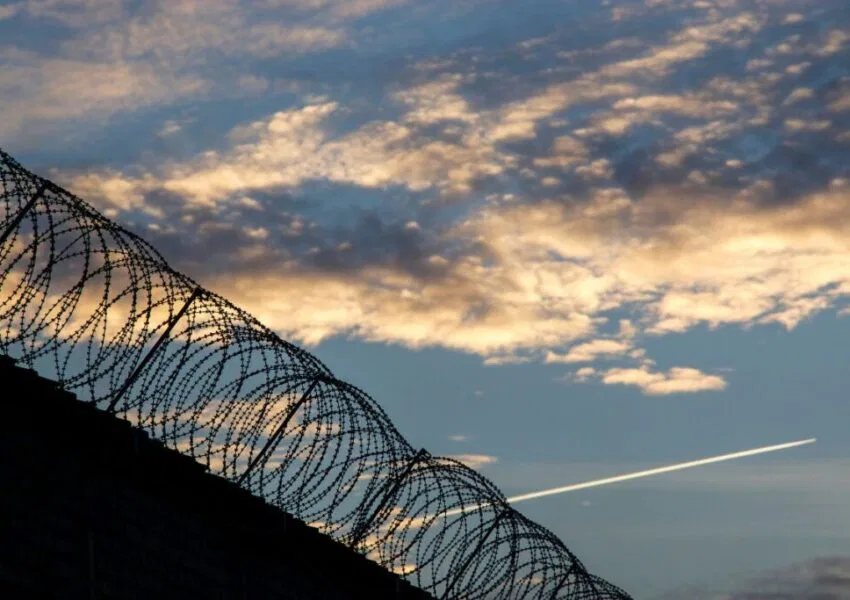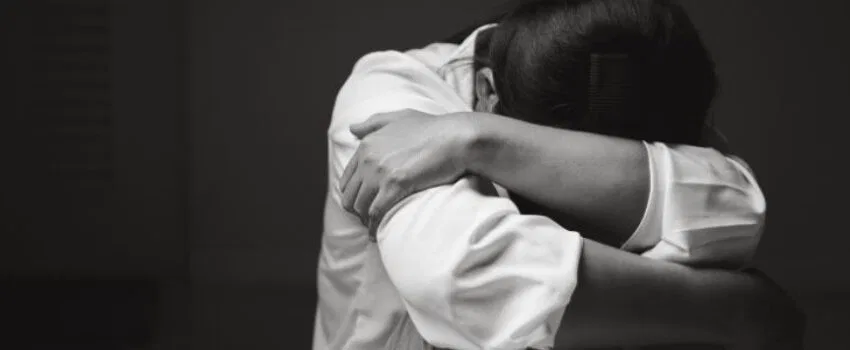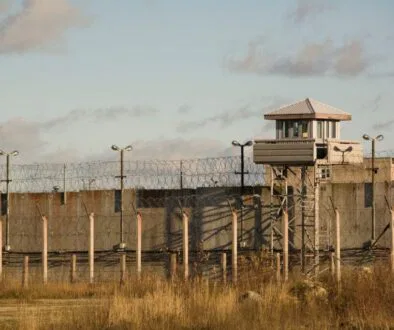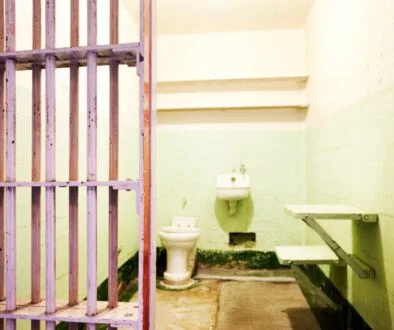The Culture of Prison Rape in the US: Statistics and Stories

Published November 30, 2023
Sexual assault and abuse of any kind is a brutal nightmare we would not dare to wish on anyone. These are a sensitive topic and a crime that can negatively impact a victim in ways we can’t fully understand.
Alarmingly, prison rape also exists. In 2001, Human Rights Watch estimated that at least 4.3 million inmates had been raped while incarcerated in the United States. The numbers were so high. We can’t even begin to imagine the horror of this tragedy.
Keep on reading, as we’ll have you educated about the culture of prison rape in the United States. It helps to raise awareness in this matter. In education, we can start a positive change to transform the lives of those behind bars. Let’s start.
What Is Prison Rape?
Prison rape, or jail rape, is the sexual assault of individuals while they are incarcerated. The phrase is commonly referred to describe the rape of inmates by other inmates. In some scenarios, it is the rape of inmates by staff.
In 2011-12, approximately 4.0% of state and federal prison detainees and 3.2% of jail inmates shared undergoing one or more incidents of sexual victimization. It is by another inmate or facility staff. It is in the past 12 months or since admission to the facility.
High prison population exist in the United States. The country has become the first and only in the world where the rape of men is more common than that of women.
Prison Rape Elimination Act
On September 4, 2023, President George W. Bush endorsed into law the Prison Rape Elimination Act (PREA) of 2003 (P.l. 108-79). The goal of it is to eradicate prisoner rape in all kinds of correctional facilities in this country. As a result of PREA, the Bureau of Justice Assistance (BJA) established the Protecting Inmates and Safeguarding Communities Program in Fiscal Year 2004.
Funding was made accessible. It gives support to states to aid efforts in safeguarding and eliminating prisoner rape. It is between inmates in states and local prisons. Also jails, and police lockup establishments.
The act enforces a zero-tolerance policy towards jail rape. It mandates the development of standards for the detection, prevention, reduction, and punishment of sexual violence in prisons.
Moreover, the act supports comprehensive research and information gathering. It is better to understand the incidence and effects of prison rates. It also requires national data collection efforts. The latter is done to monitor the problem effectively.
The PREA emphasizes the rights of prisoners. It aims to be free from sexual abuse and harassment. All efforts to fight sexual abuse and misconduct within institutions are driven because of it.
Prison Rape Culture
Many people sadly believe that prisoner rape is just part of life behind bars. It seems to be an inevitable punishment for breaking the law. Yet, sincerely, it is a human rights crisis that we can and must stop. Public attitudes about sexual abuse in jails are often anchored on myths and stereotypes about incarcerated life. Also, the prisoners themselves.
Some think rape in prison is acceptable. It is because victims are bad individuals who are unworthy of compassion due to their acts. Others feel that this abuse somehow scares off crime. Also, that what goes on behind penitentiaries does not matter to the rest of us.
Prison rape culture refers to the prevalent issue of sexual violence that happens within correctional facilities. This issue is multifaceted. It is deeply rooted in power dynamics. Also, masculinity norms. And lastly, systemic failures within the prison system.
1. Power dynamics
In prison, it plays a significant role in sexual violence. Inmates with more social or physical power may exert control over weaker inmates. How? Through sexual assault. In some cases, correctional staff may also abuse their authority. They may sexually exploit the inmates under their care.
2. Masculinity norms
Prison often fosters hypermasculine environments. Strength and dominance are more or less highly valued. Some inmates may resort to sexual violence. It is as a way to assert their masculinity or domination over others.
3. Systemic failures
The prison system often fails to address and prevent sexual violence adequately. Despite legislation such as PREA, many prisons lack resources, training, and will. These three are required to implement protective measures effectively. Underreporting of sexual assaults is also common. It is because of fear of retaliation, shame, and lack of trust in the system.
Jail Rape Victim Stories
There are numerous harrowing accounts of individuals who have experienced sexual assault while incarcerated in the United States.
Johanna is a prisoner in a California state prison. Her work supervisor raped her. Another account comes from an individual who was raped by four inmates while in country jail. A 17-year-old who had received a life sentence reported being raped in prison. Adam, another victim, shares his story of being raped by three prominent inmates.
Prison Rape Statistics
- In 2008, an estimated more than 209,400 individuals were victims of sexual harm in prisons, jails, and juvenile facilities across the country. (Department of Justice, 2012)
- Inmate-to-inmate sexual harassment made up more than half of all reported prison rape incidents. (BJS data, 2016-2018)
- Only 6% (1,673) of the reported cases of sexual abuse were substantiated. (BJS data, 2018)
- Women inmates are more likely to experience sexual abuse from other inmates than male inmates. (BJS Report, 2008)
- Female prisoners are three times more likely to be abused by other female inmates than by male staff. (Scientific American Magazine, 2017)
- At least 15% of incarcerated women are victims of sexual assault in prisons. (Human Rights Watch, 2007)
- Reported incidents of sexual abuse in juvenile facilities have declined by more than 2% from 2012 to 2018. (BJS Report, 2018)

ADVERTISEMENT
Frequently Asked Questions About Prison Rape
1. What is a prea violation?
A PREA violation refers to any actions or inaction that goes against the standards set by the act. This can surround a wide variety of behaviors.
- Sexual abuse or harassment of an inmate by another inmate or staff member.
- Failure to report suspected sexual abuse or harassment.
- Retaliation against inmates or staff who report sexual abuse or harassment.
- Failure to properly investigate allegations of sexual abuse or harassment.
- Failure to provide appropriate support and services to victims of sexual abuse or harassment.
2. Examples of prea violation
Offender on Offender Sexual Misconduct. This includes sexual assault, sexual abuse, sexual harassment, and consensual sex acts between inmates. Any sexual activity between inmates is considered a violation of PREA. Consent cannot be entirely given in a prison setting due to the inherent power imbalances.
3. What percentages of prisoners are sexually assaulted?
A report yielded by the Bureau of Justice Statistics indicated that of 1,673 substantiated incidents of sexual victimization in 2018, about 58% were done by other inmates. Also, 42% by staff.
4. Who is most at risk of being sexually assaulted in prison?
Nonheterosexual inmates face a higher risk of staff-on-inmate sexual assault. About 5.4% of nonheterosexual inmates reported victimization. This is compared to 2.1% of heterosexual inmates.
The Bottomline
Wherever we are, or whether or not we’re criminal or normal acting citizens, no one deserves to be sexually harmed. Prison rape will never be okay. Safety is a fundamental human right. We’re also entitled to each of our bodies; no one should harm it.
Share to raise awareness about it. Let’s spark a conversation. Let’s spark a change.
Reduce Your Jail Call Costs By Up To 90% Per Minute With GlobalTel
GlobalTel’s inmate calling service lowers jail call per minute rates by up to 90% for jail calls from US facilities. Sign up now and use the special jail call phone number we create for you to eliminate the long distance jail call fees. Try GlobalTel for only $45.99 for 90 days. Make US/domestic and international jail calls at the local rate and stay connected to your incarcerated loved ones for less. Learn more about how to sign up for calls from inmates here.

This Content Is Fact Checked
Our esteemed team of specialists has thoroughly validated the accuracy of this information. Discover further details about the rigorous editorial guidelines for our website here.
ADVERTISEMENT

About The Author
I am Tracy Gorman, a seasoned writer with a passion for crafting content on various subjects. I possess the expertise to delve into any niche and deliver exceptional articles.




